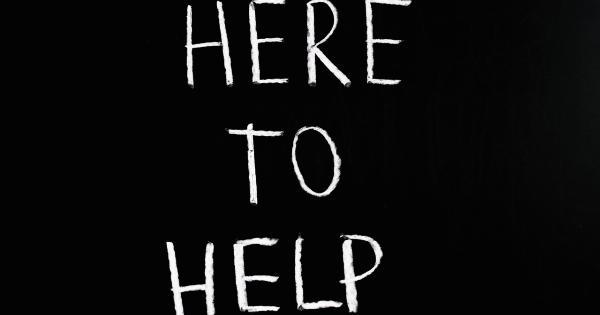In the realm of cancer treatment and support, communication is of paramount importance.
From the initial diagnosis to the ongoing management of the disease, effective communication can empower patients and their loved ones, promote understanding among healthcare professionals, and ultimately improve outcomes. However, when it comes to cancer, the language used can often be complex, overwhelming, and difficult to decipher for those who are unfamiliar with the medical field.
In this article, we will explore the importance of reading beyond the words when it comes to the language of cancer.
Navigating Medical Jargon
Medical jargon and technical terms can be major obstacles when attempting to understand a cancer diagnosis or treatment plan.
From anatomical descriptors to specific cellular processes, it is easy to feel overwhelmed by the sheer volume of unfamiliar terms. Nevertheless, it is crucial for patients and their loved ones to familiarize themselves with the language of cancer in order to actively participate in decision-making processes.
When faced with medical jargon, it can be helpful to reach out to healthcare professionals for clarification.
Asking questions, requesting plain language explanations, and seeking additional resources or materials can make a significant difference in one’s ability to comprehend and engage with the information provided.
The Role of Emotions and Psychology
Language is not merely a vehicle for relaying information; it also shapes our emotional responses and can significantly impact our psychological well-being.
The way in which information is communicated can profoundly influence how patients and their loved ones perceive and cope with their diagnosis. Studies have shown that positive and empathetic language can foster hope, enhance trust, and improve overall quality of life.
Conversely, the use of negative language or alarming terms can instill fear, heighten anxiety, and even deter patients from seeking necessary treatment.
It is crucial for healthcare professionals to strike a delicate balance between honesty and sensitivity when communicating with individuals affected by cancer.
Improving Patient-Provider Communication
Strong patient-provider communication is vital for ensuring that individuals receive appropriate care and support throughout their cancer journey.
Effective communication encompasses not only the transmission of medical information but also active listening and empathy.
To facilitate better communication, healthcare providers can:.
- Use simple and clear language: Avoid complex terminology and explain medical concepts using everyday language.
- Allow ample time for questions: Encourage patients to ask questions and provide them with the necessary support and time to voice their concerns.
- Practice active listening: Pay attention to patients’ concerns, emotions, and preferences. Demonstrate empathy and validate their experiences.
- Provide written materials: Supplement verbal communication with written materials that patients can refer to at their own pace.
- Utilize visual aids: Diagrams, illustrations, and other visual aids can help patients better comprehend complex medical concepts.
The Importance of Supportive Language
Supportive language plays a crucial role in fostering a positive and empowering environment for individuals affected by cancer. Words have the power to comfort, motivate, and inspire hope, or conversely, to discourage, dishearten, and induce despair.
Healthcare professionals, as well as friends and family members, should be mindful of the language they employ when engaging with patients.
While it may be challenging to find the right words, focusing on expressions of compassion, encouragement, and reassurance can go a long way.
Phrases such as “I am here for you,” “You are not alone,” and “We will face this together” can provide solace and instill a sense of support and belonging.
Understanding Cultural and Linguistic Differences
It is important to recognize that language is not solely about words, but also about cultural and linguistic nuances.
Different cultures may have unique perspectives on illness, different ways of expressing emotions, and diverse beliefs surrounding treatment options.
Healthcare providers should aim to foster cultural sensitivity in their communication with patients.
By acknowledging and respecting cultural differences, healthcare professionals can build trust, enhance understanding, and create a more inclusive environment.
Supporting Patients Through Language
In addition to healthcare professionals, individuals within patients’ support networks can also make a significant impact through their choice of language.
Friends, family members, and caregivers should be mindful of the words they use when interacting with individuals affected by cancer.
Supportive language can help individuals feel heard, validated, and encouraged. It is crucial to acknowledge their emotions, avoid dismissive remarks, and provide a safe space for them to express their fears, concerns, and hopes.
The Power of Mindfulness in Language
Mindfulness is the practice of being fully present and aware in the current moment. Applying mindfulness to language can provide immense benefits to both patients and healthcare providers.
By being mindful of the words we choose and how we use them, we can bring greater compassion, clarity, and understanding to our communication.
Mindful language involves:.
- Awareness: Being aware of the impact of our words on others and ourselves.
- Presence: Being fully present in the conversation and actively listening to the person speaking.
- Empathy: Understanding and acknowledging the emotions and experiences of the person with whom we are communicating.
By cultivating mindfulness in language, we can create an environment that promotes healing, fosters meaningful connections, and supports both patients and healthcare providers on their cancer journey.
Conclusion
The language of cancer extends far beyond the words themselves. It encompasses emotions, psychology, cultural nuances, and the power to inspire hope or induce fear.
By reading beyond the words, we can foster better communication, provide support, and ensure that individuals affected by cancer feel empowered and understood.































